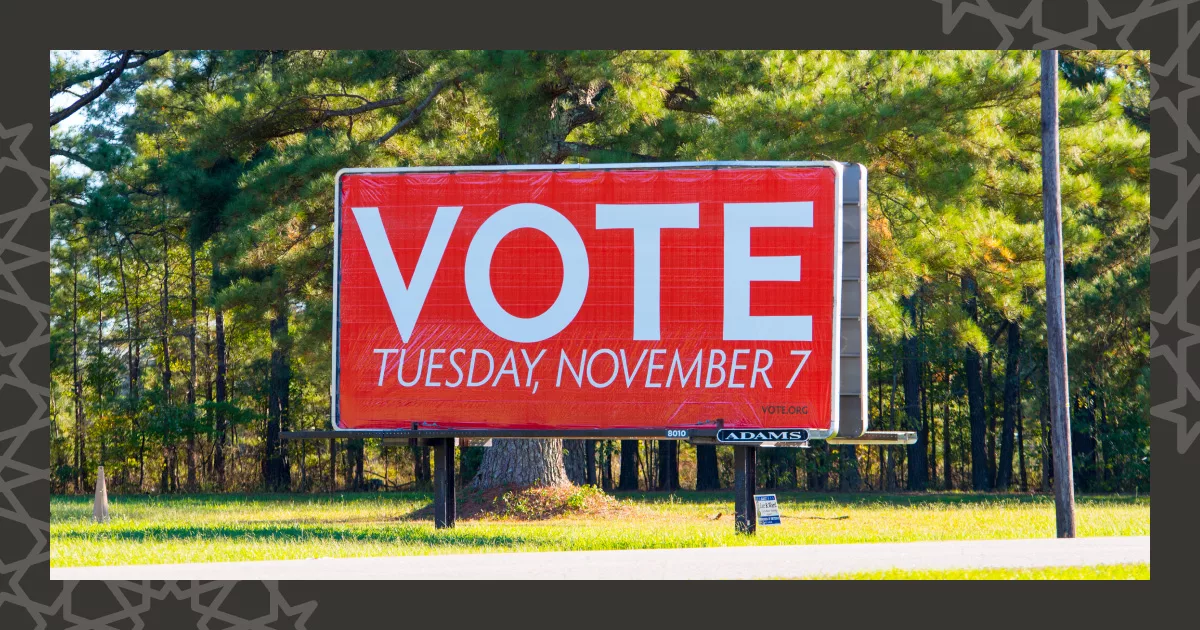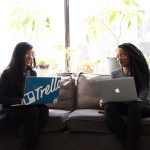By Mandy Gardner
Strong turnout from black voters was the deciding factor in Doug Jones’s recent congressional victory, election analysts agree. According to exit polling, 30% of Alabama’s special election voters were African American, and 96 percent of them voted for Jones, who was sworn in as the first Democrat Senator from Alabama in 25 years. Vote.org, a nonpartisan nonprofit with a mission to use digital technology to simplify political engagement, increase voter turnout, and strengthen American democracy, played a significant role in that outcome. In the weeks before the Moore/Jones election, Vote.org ran the largest nonpartisan get-out-the-vote effort in Alabama, using hyper-targeted methods specifically geared towards increasing African American voter turnout.
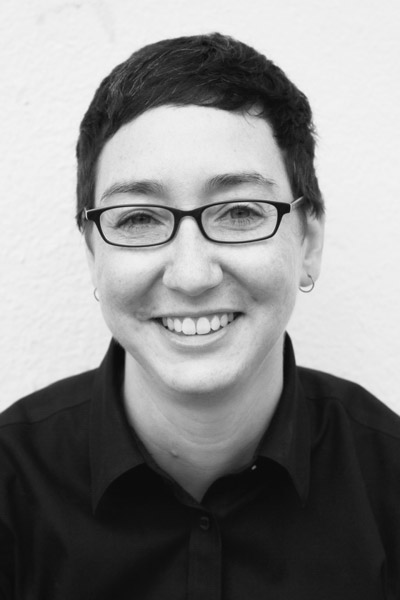
Debra Cleaver, Founder & CEO of Vote.org
You may have met Debra Cleaver, the Founder and CEO of Vote.org, at SOCAP15 when her organization, then called Long Distance Voter, was selected to receive an Entrepreneur Scholarship. Long Distance Voter relaunched as Vote.org in April 2016 and has grown in scope and influence ever since. They have earned a variety of accolades, including a Knight News Challenge Award for a tool that allows citizens to complete, sign, and mail their vote-by-mail applications directly from their smartphones. Vote.org was also selected to serve as the official data provider for Google’s “How to Vote” project in 2014, which garnered over 30 million views. Her organization was also accepted into the Y Combinator accelerator program as one of their rare nonprofit ventures.
We recently sat down with Cleaver to discuss the role that Vote.org played in the Alabama special congressional election; the damaging and shortsighted effects of candidate neglect; and how racially disproportionate election spending perpetuates inequality.
Can you describe some of the tactics used by Vote.org during the recent Senate special election in Alabama and offer a few of the major lessons you have learned from your efforts to increasing voter turnout?
Vote.org is fundamentally different from other civic engagement groups in a few key ways. First, we believe that citizens actually want to vote, and will vote in higher numbers–and with greater consistency–as voting becomes easier. We reject outright the idea that American voters are apathetic, and devote approximately 0% of our resources to convincing people to vote. Second, we’re a non-partisan organization, so we don’t discuss candidates or issues. Instead we focus on voting itself. Let’s unpack that in order.
During 2016 we confirmed a long-time hunch of mine: that if you proactively provided voters with their polling place information, they would be more likely to vote. We tested this with about one million voters in 2016, and the results were both statistically significant and positive. So in Alabama, we purchased the cell phone numbers of 300,000 African Americans (roughly one third of all registered black voters), and hired humans to send individual text messages to them that included detailed polling place information.
Then we also layered a marketing campaign on top of this, only instead of marketing a candidate or an issue, we marked democracy itself. We purchased 150 billboards in the majority black counties that said VOTE / December 12, 2017. Folks on the ground told me the billboards were literally everywhere you looked, and since they’re billboards, they were also huge. We literally bought every single billboard that was for sale in primarily black counties, so the election was basically the only thing being marketed on that particular form of media. We also paid for radio ads for three weeks on Pandora and Spotify, specifically targeting black voters in Alabama. These ads–like the billboards–simply stressed the importance of voting on December 12, 2017. Finally we sent 200,000 pieces of direct mail to low-propensity black voters urging them to cast ballots on December 12, 2017. So in effect, we fully saturated all available media with a vote, vote, vote message.
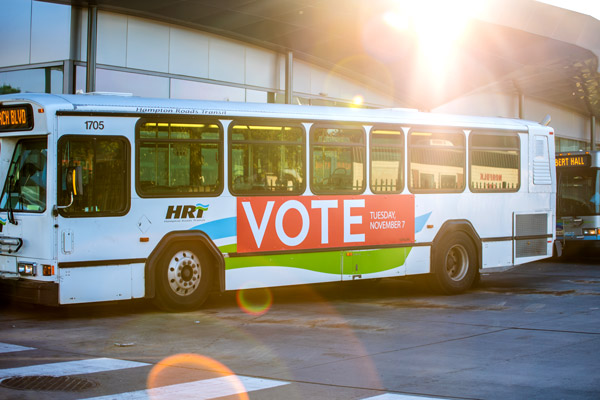
Unfortunately I never got to see the billboards we put up in Alabama, but I spoke to people on the ground who said, “Everywhere you look there is a giant billboard that tells you to vote.” People assumed that the government put them up. We didn’t really care, we weren’t trying to send them to Vote.org we were trying to send people to the polls.
What we were really doing was establishing this mental model of–you are going to vote. That’s what you are going to do on election day. To reinforce that we proactively sent polling place locations to 300,000 people. We got the radio ads. We did direct mail. We did all of that.
People are intrigued by this idea of marketing democracy as opposed to marketing a candidate, so let’s talk about that for a bit. Marketing candidates simply does not work. There are over 500,000 elected officials in the United States, and most of them are about as interesting as a bowl of cream of wheat (no offense, cream of wheat fans). Which is fine, because candidates are not supposed to be charismatic, they are supposed to be competent. At the end of the day they are supposed to make government go. So counting on the charisma of any one candidate to increase voter turnout is a strategy that isn’t sustainable or even appropriate. Citizens should vote because we representational democracy only works if people participate, and voting is the bare minimum that each of us must do. So Vote.org markets voting, and not candidates, and this system works.
Progressive groups, including all candidates and PACs, spent $5.6B in 2016 attempting to increase voter turnout. Yet voter turnout actually declined among people of color. People of color represent almost 40% of all registered voters in the United States. Do you want to guess how much of that was specifically for outreach to people of color? Just guess: I’ll wait. Ok, I’ll tell you. $30M. So out of $5.6B only $30M was targeted specifically for outreach to people of color. Which means that approximately 99.7% of the money was spent on tactics that reach white people.
Plenty of people disagree with me on this tactic, and those people are wrong. Presidential years are all about pomp and circumstances, and billions of dollars are spent marketing individual candidates. If this tactic worked, voter turnout would be higher. Instead, election costs soar, turnout stagnates around 60%, and Americans elect wholly unqualified candidates to office.
Speaking of overspending and producing lackluster results: Progressive groups, including all candidates and PACs, spent $5.6B in 2016 attempting to increase voter turnout. Yet voter turnout actually declined among people of color. People of color represent almost 40% of all registered voters in the United States. Do you want to guess how much of that was specifically for outreach to people of color? Just guess: I’ll wait. Ok, I’ll tell you. $30M. So out of $5.6B only $30M was targeted specifically for outreach to people of color. Which means that approximately 99.7% of the money was spent on tactics that reach white people. So despite the fact that POC were 40% of all potential voters, the powers that be decided that 0.3% of the budget was sufficient. And then when POC didn’t turn out to vote, we somehow blamed them for not doing their civic duty? This is utter nonsense. Can you image what would have happened if progressives spent even 20% of the $5.6 billion dollars on outreach to POC? I can. Vote.org would probably be able to shutter our doors and I’d be out of a job.
Now the question is, how could you possible spend $5.6 billion dollars in outreach anyway? The answer is television: it’s literally the only thing that you can spend billions of dollars on in a short period of time. Who still sees TV commercials? Older, wealthier, white voters see TV commercials, because they’re the only ones who still spring for cable. Everyone has cut the cord, and probably hasn’t seen a TV commercial in years.
Our goal as an organization is simply to do the work necessary to make the electorate match the population.
So the end result of this overspending–which I think of as misspending–is that candidates really only talk to white voters, which means white citizens vote at higher rates than POC, and the electorate fails to resemble the population. Our goal as an organization is simply to do the work necessary to make the electorate match the population.
In Alabama, Doug Jones and Roy Moore were tied and it was seven weeks before the election. And I thought, what is going on here? How is it even possible that a Democrat is neck and neck in a deep red state, and this was before the Moore scandal broke. We started to look at the math to understand what was happening and correlated those early polling results with the fact that 30% of registered voters in Alabama are black.
Low propensity voters aren’t born. They’re made. They are made via candidate neglect.
Drop-off in midterm and off-cycle elections is disproportionally people of color because if we neglect them during presidential years, we must completely neglect them during other cycles. There is this idea that someone can be a “low propensity” voter. Low propensity voters aren’t born. They’re made. They are made via candidate neglect. Which is a fancier way of saying, if a candidate is going to pay attention to a poor person, or young person, or a person of color, it is only going to be during presidential years and they are going to be completely ignored for four more years. None of this is predestined. The people who vote are encouraged to vote.
So we thought, what would happen if we hyper-targeted people of color? Could we actually stop this completely predictable drop off from happening? I can’t say with 100% certainty because obviously so much of this stuff is difficult to measure, but there was NO drop-off between 2016 and 2017 for people of color in Alabama.
We think that our efforts had some impact on that. While everyone else was spending 100% of their money targeting white voters in Alabama, we spent 100% of our money targeting people of color. From what I can tell, we ran the single largest nonpartisan get out the vote campaign ever in Alabama history, which is amazing because we only spent $800,000. Doug Jones and his supporters spent almost $12M. (In another recent election in Atlanta, Georgia) Jon Ossoff and his people spent over $30M and still managed to lose a special election in a black county by not talking to black voters.
To summarize, we think low propensity voters are literally a result of neglect. Young people, people of color, and poor people don’t vote because candidates ignore them. Candidates ignore them because they are considered low propensity. But no 18 year old starts out as a low propensity voter. It is like credit–you build it over time, but we all start at the same place. By the time someone is 40 and they’ve only had candidates reach out to them twice in their lifetime, of course they don’t vote.
If the electorate matches the population, it is not that Democrats benefit or Republicans benefit, it is that citizens benefit. The end result of that is that politicians are actually accountable to a greater percentage of citizens. That is why we attempt to hypertarget the populations that are ignored by partisan groups.
African-American voters turned out to vote in the Jones/Moore election at the same levels they did during the 2016 Presidential election, despite the fact that Alabama has one of the strictest (and critics say, most racially discriminatory) voter ID laws in the United States. Did Vote.org do any work in Alabama to make sure that people of color knew the laws and how to navigate the system so they could vote on election day?
The fascinating thing about off-cycle and midterm elections is that at least 40% of the people who don’t vote are already registered to vote. Our approach was that, instead of starting fresh and trying to register all the brand new voters who have so many hurdles to cross, what if we take the people who successfully voted in the last election in 2016 and get them to vote again.
In this case, interestingly we didn’t. We didn’t do anything special. The fascinating thing about off-cycle and midterm elections is that at least 40% of the people who don’t vote are already registered to vote. Our approach was that, instead of starting fresh and trying to register all the brand new voters who have so many hurdles to cross, what if we take the people who successfully voted in the last election in 2016 and get them to vote again. So all of our efforts this year were gotv (get out the vote) and not voter registration. We targeted people who had already crossed all the hurdles that Alabama put in their way to keep them from voting. We didn’t get started until four weeks before the election. Our message was “Vote on December 12th.” In this case our racial lens was simply paying attention to the 32% of Alabamians who are black.
You have identified many simple, elegant solutions to increase voter participation. Can you speak to some of the solutions you are putting into place to increase voter turnout among underserved populations?
In March of 2017 I decided to start buying billboards. By the end of the year, between Virginia and Alabama, we bought almost 300 of them, because where do you see billboards? Have you ever seen a billboard in a rich neighborhood? Of course not. Billboards are only in low-income neighborhoods, so if you want to reach low-income Americans, billboards are a good place to start. Another thing we did in Virginia, we bought ads on the insides and outsides of public transit buses. Who rides public transit? Poor people. So if we can agree that TV commercials are seen by a certain demographic of voter (older, wealthier, whiter), then we can also say that billboards are seen by a different demographic of voter (poor voters, which in the US often also means POC because structural racism).
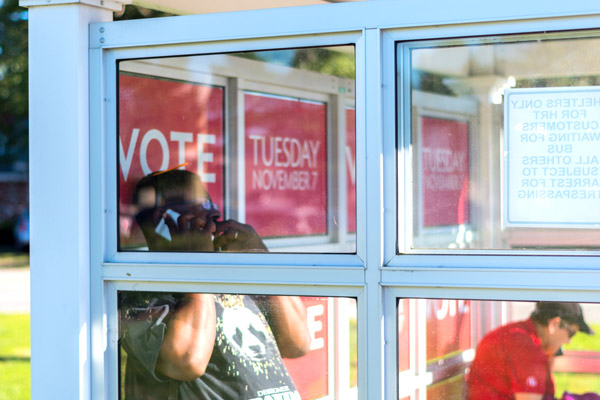
Why do we send text messages instead of door knocking? Its because a vast majority of doors are not answered, whereas most text messages are read within three minutes.
Why do we proactively provide polling place information? Because most people don’t know where to go to vote. And if you vote at the wrong polling place, your vote is not necessarily going to count.
I think another key thing that we do is we always approach people as if they are going to vote. That is the model we established. Of course you are going to vote–we are just going to make it more convenient for you. As opposed to the approach that people need to be persuaded to vote.
We are confident that white voters are being approached by candidates, so our approach is to reach out to people who aren’t white and talk to them about voting. I don’t think anything we are doing is groundbreaking. If you assume 100% of the voters you don’t do outreach to won’t vote maybe we’ll just do some outreach to them. It seems to be working. I am confident that we had significant influence in Alabama. Many news outlets covering the story of why people of color turned out at such unexpected rates in the 2017 election pictured one of our billboards. It is used as a visual representation of how much conversation there was around voting among people of color in Alabama.
The billboards are how you establish this idea that everyone is going to vote – you market democracy. The reason why everyone is talking about voting is that the word “vote” is spelled out in 20 foot letters everywhere you look. Everyone was talking about voting. We literally put the word vote everyplace you looked. It was on the radio, on billboards, on that piece of paper in your mailbox, and even showing up on your phone as a personalized text message. I decided to market democracy as aggressively as Apple markets the iphone. If Apple can get you to wait overnight in the rain to buy a new phone I can get you to take ten minutes out of your day to go vote.
What call to action would you issue to the SOCAP community?
One of the interesting things about the US is that we are one of the only countries in the world with democratically elected leadership in which people vote on a workday. Everyone else has an election day holiday or they vote on the weekend. We want to make election day a holiday.
The answer is not the government. The government is disinclined to do this, and even if it were a federal holiday it would only affect federal employees. So we are asking companies to give election day off to their employees. Either to swap it with Columbus Day or President’s Day or create a new holiday. If that sounds too expensive, give your employees two hours paid time off.
Democracy is good for business because stability is good for business. When fewer people participate in elections, radical outcomes are more likely. Radical incomes lead to instability. Instability is bad for business. Therefore, democracy is good for business.
We own ElectionDay.org. I would strongly encourage everyone to check it out. If you are an investor it should be one of the things that you require of companies that you invest in. It is up to us as business leaders, investors, activists to start to do the things the government isn’t doing to create a culture of voting in the US and to make it easier. Democracy is good for business because stability is good for business. When fewer people participate in elections, radical outcomes are more likely. Radical incomes lead to instability. Instability is bad for business. Therefore, democracy is good for business.
This is a no money ask. The people who attend SOCAP, investors and entrepreneurs, are influential. When influential people realize that they can make changes in their companies that increase voter turnout then other people will follow suit.
Also, I would say I think it important to not just focus on financial incentives. We are a nonpartisan organization and funded almost entirely by venture capitalists. People ask, “what are they looking for from you? Because they are not getting equity or stock or anything like that.” You can get a nonfinancial return. In our case, we provide the stability that businesses need to thrive. I feel it is on each of us to make sure that democracy is healthy and that democracy thrives.
What’s your vision for the future, changes do you hope to see your work accomplish?
I will call our work successful, when, in every election and every race, the electorate matches the population. Also when voting is a habit and not a hobby. Currently even consistent voters in the US mostly vote in presidential elections. When more Americans vote, and vote more consistently, that is when I will say our work is done.
We approach it through a lot of projects and technology work which is really just a way of distributing information to people. We are about to hire our first staff attorney so that we can start going after some of the election laws that are simply antiquated. The reason why most voter registration deadlines are 30 days before the election is that they predate computers. They were established when every form needed to be processed manually by a clerk. With modern technology that is no longer the case.
We have a whole body of legal work, and a lot of marketing, but really we always look for the easiest way to create change. If we start marketing democracy as a product and don’t talk about individual candidates, but the fact that you are going to go vote; if we make voting convenient, and make voting a habit; if the electorate matches the population – these changes will make democracy better for everyone.
Learn More
Vote.org on Medium: Invest in Voters of Color
Bustle: Debra Cleaver, Founder of Vote.org, is Making Women’s History Now
Wired: This Y Combinator Backed Company Has a Secret Weapon to Sway Elections
Forbes: What Can Non-Profit Startup Vote.org Do With Y Combinator Seed Funding In 178 Days?
ACLU: Alabama’s Effort to Suppress Black Vote Couldn’t Prevent Huge Turnout
